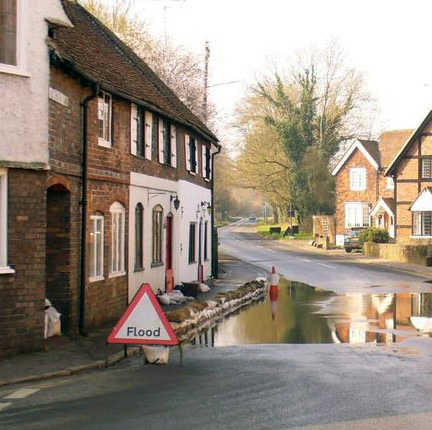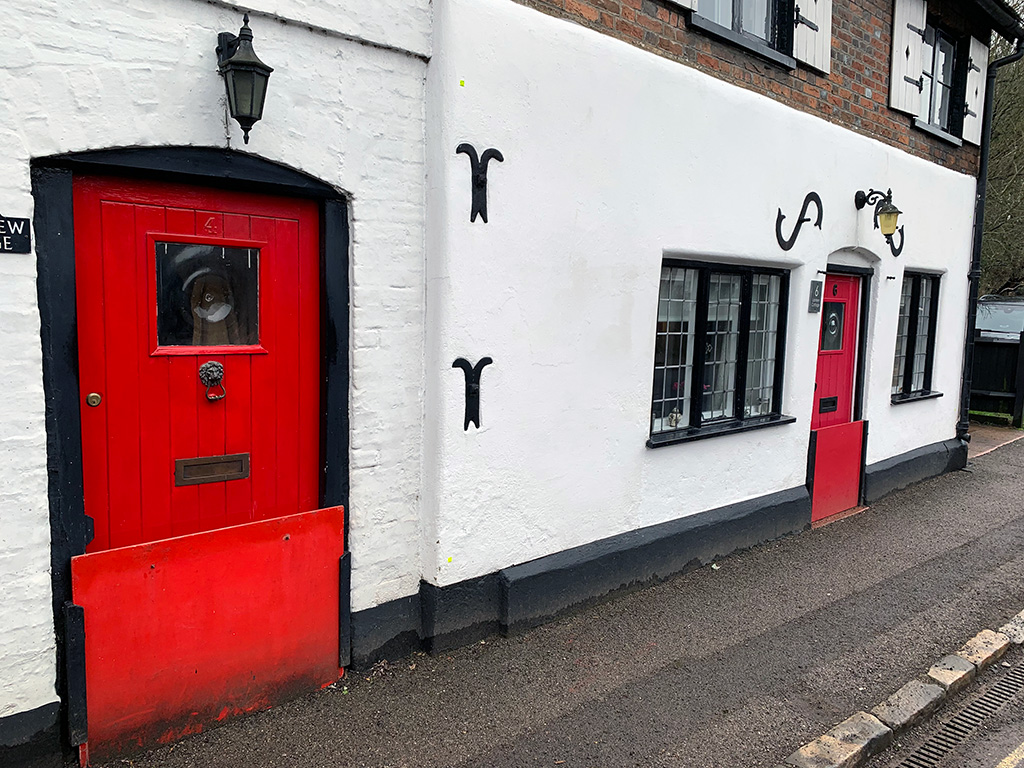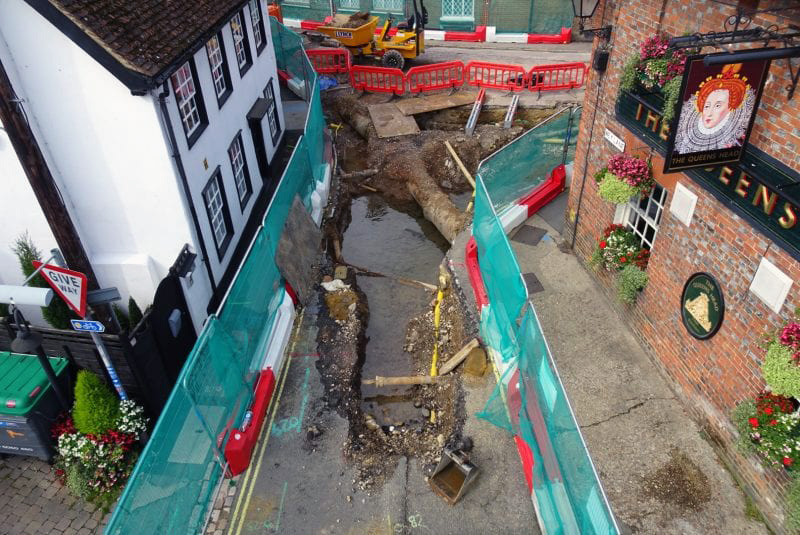The great flood of Chesham in 1918
Chesham is in a river valley and is prone to flooding. However, there has never been a flood as great as that which happened in 1918. This is the story…

The cloudburst
On Friday May 17, 1918 somewhere above Ballinger, Pednor and Chartridge there was a massive cloudburst. In a short space of time a massive amount of water fell near Chesham. In Chesham there was a rain-shower and a downfall of hail. Locals carried on, unaware of the bigger surprise that was to come.
The floodwaters
The water which had fallen upon the ridges ran down the hillsides to the bottoms, flooding farms and stripping fields. It carried hay ricks and sheds from one meadow to another. Cattle in lower fields were carried away and drowned. Water made its way over the fields and down the lanes.
In Chesham, the water flowed onto Ashridge Road, down Bellingdon Road, into Sunnyside Road, and then Berkhampstead Road and Broad Street, flooding Newtown.
Water ran onto Missenden Road where it headed for Chesham old town. Water flowed along Pednor Bottom like a torrent. Garden walls and fences crashed down under the sheer force of water. Where floodwaters from Missenden Road and Pednor Road met at Pednormead End by the Queen’s Head, the waters swirled like a whirlpool.
Water flowed down Wey Lane towards Germain Street and King’s Street, and headed towards Waterside. Water flowed down Church Street towards Market Square, where it met the waters coming down the High Street, and the old Town Hall was like an island.
The culverts, which carried the River Chess under the roads, were already full from high springwater. Chesham was flooded from the Vale to the Moor. Roads were like rivers and the Moor was a lake. Houses on Bois Moor Road found themselves on the water’s edge.
Effect of the flood
The flood ripped up roads and pavements. As it poured down streets, it carried mud into people’s houses through the front doors, and went out the back door carrying furniture, clothing, boots and food. Cellars were filled with water. Food in cupboards was destroyed.
People who were at home watched aghast as the water level slowly rose in their cottages, and in the swirl of water and mud their saw all their belongings being swished about, sometimes with fish. People went upstairs, only to watch the water level creep halfway up the stairs.
A piano, which came out of Wedge Cottage in Church Street, was seen sailing down Wey Lane. As the water went into the woodyards of Chesham, wood was picked up like matchsticks. Logs and planks floated into the streets and careered down the flooded roads, carried away by the flow. Many of these lodged in hedges as far as Blackwell Hall.
Some people resorted to walking along the high railway line to get about. As they looked about the town resembled a lake.
Rescue operations
A full moon and clear sky enabled rescue work to continue until midnight, and it started again in the morning. The best way to get around was by horse or boat. People were rescued from upstairs windows by ladders, or climbed out onto horse-drawn vehicles.
The aftermath
The next day was a sunny Saturday. Damage could be seen all around. The water started to subside on Saturday morning leaving the roads covered in debris, mud and shingle. The water subsided, but locals had the heart-breaking job of trying to get the mud, filth, wreckage and water out of their homes.
Surviving household goods were muddied and sodden. Gardens were covered in silt. Mangled hen-coops and rabbit hutches were found lain about, sometimes with their drowned creatures inside. Small stones and debris deposited by the receding waters meant that the roads looked more like the seashore. Chesham’s cress beds ended up under many feet of gravel.
Chesham Council called an emergency meeting and by 3 o’clock food rations were being distributed. Days later as people walked by the river bank, and upon the Moor, they found household items strewn about. For a long time iron fencing was entangled with refuse carried by the water. Surviving bushes bore traces of mud and refuse up to three foot high. The level of the deluge could be seen three to four foot up on many walls for decades.
Great Missenden and Amersham
It was not just Chesham which was affected. Water cascaded down the hills into Great Missenden.
The River Misbourne burst its banks. Houses in Church Street, Great Missenden, were flooded to a depth of three foot and roads were impassable.
One man took his pig upstairs for the night. Many allotment holders found their newly-planted potatoes on their neighbour’s land. Water flowed down towards Little Missenden and Amersham, where water ran halfway down the High Street.
Return of the flood
On the evening of Wednesday 22nd, there was a violent thunderstorm over much of the Chilterns. There was loud lightening and heavy rainfall over an area from High Wycombe to Chesham. This led to further flooding in Chesham, and the clean-up started again.
Chesham flood relief fund
Chesham Flood Relief Fund was set up and a public meeting was called for Tuesday evening. Notices were read out in churches that Sunday. A full public meeting was held at the Town Hall, when £560 was subscribed.
By mid-June the total was £1,453 16s 9d. People sent in statements of losses, and claims paid out came to £1,289 7s 8d. After expenses, there was a balance of £147 8s 3d. In 1923 this was given to the Chesham Cottage Hospital Endowment Fund.
Legacy
A similar, but not so bad flood, happened on Friday May 21, 1926. Newtown was flooded on September 3, 1931 and in July 1963.
Although nothing as bad has happened since 1918, little has changed. Chesham is still prone to flooding and the Victorian culverts cannot cope with abnormally large amounts of water.

In Church Street and Missenden Road you can see houses with wooden flood barriers, which people step over to get through their front doors, and there are often sandbags by the front doors.

Floods have happened recently in 2001, 2006 and 2014. At the end of 2020 works began to sort out the culverts and drains at Pednormead End by the Queen’s Head.

This article was first published in the pages of the Bucks Free Press, Amersham and Chesham edition, on January 31, 2021.


